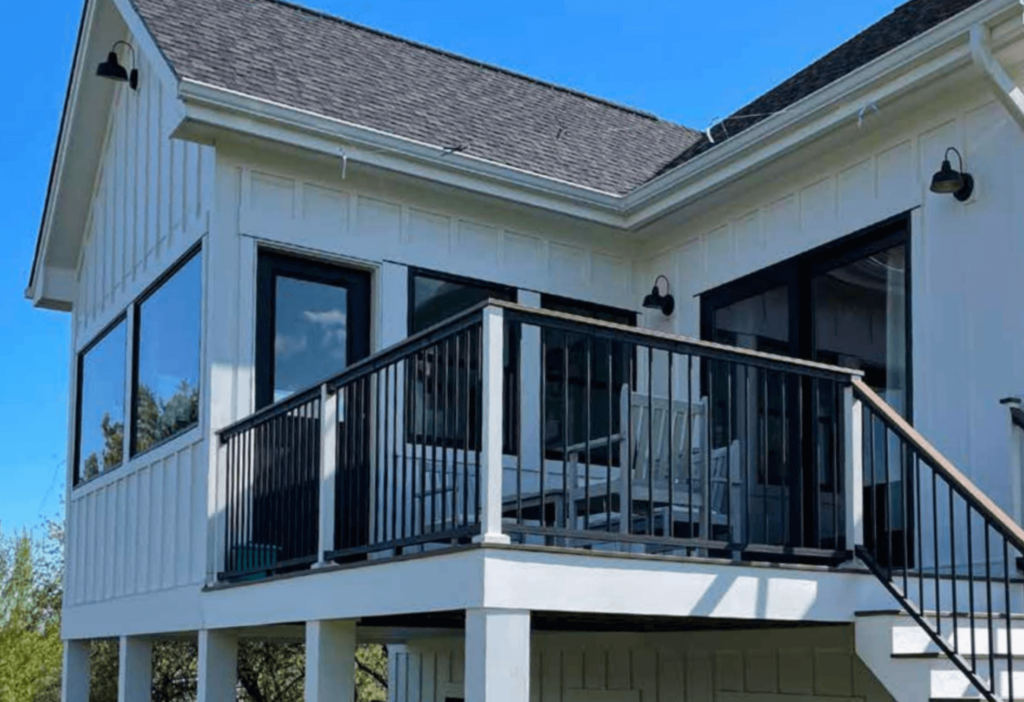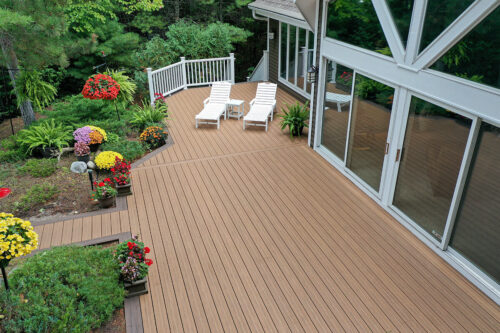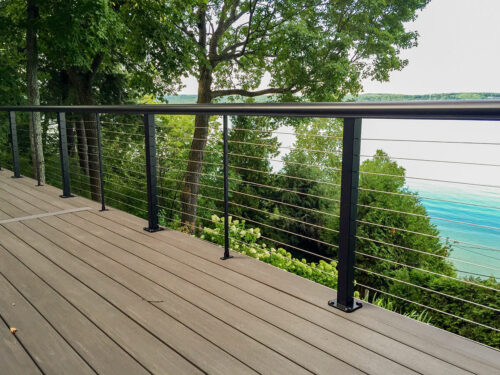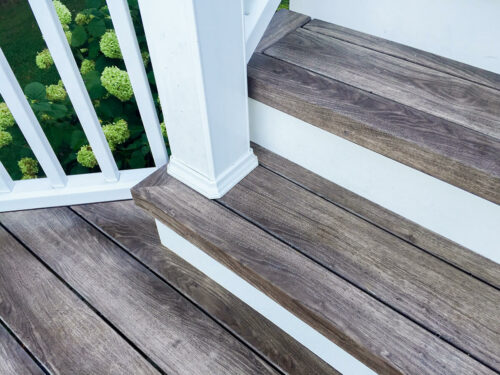There are so many decking materials on the market today it can be a little daunting to homeowners as they review material choices for their project and budget. Here is a short review of the main decking materials available and some of the pros and cons of the various choices.

The first phase of a deck project is to have a sketch, or ideally, a set of professional design plans, that map out your project. You will want to consider the following options for your project How will the space be used? Will you be eating outdoors, watching sunsets, or sitting around a firepit? Do you plan to cook outside and need space for an outdoor kitchen? Do you need built-in seating?
For elevated decks, your plan should include steps to the yard or beach. If the steps are used at night, consider built-in lighting that can illuminate the steps and rail posts. A railing is required for any deck that is 30 inches above grade and railings need to be 36 inches in height. Railing options range from horizontal cable or glass railings that allow the best see-through to the yard or lake to all types of spindle railings.
Aesthetically, how do you want the deck to blend with the home design? Pergolas can add nice design elements and screened porches can be built with retractable screens. The color of your decking and railings should flow nicely with the home design as well.
When it comes to decking materials, there are many choices including wood, composite, PVC, mineral-based decking and Zuri premium decking. While many homeowners are familiar with the brand name TREX®, this is just one of many types of composite decking materials.
Wood Decking
Lower-cost pressure-treated lumber is the least expensive decking material and is widely available. We also install thermally-treated hardwoods and more expensive exotic woods like Cyprus and Brazilian hardwoods. Wood decks generally need more maintenance than man-made materials like composite, PVC, or mineral-based decking materials.
Composite Decking
Traditional composite decking is a man-made building product that indudes an approximately equal mix of recycled wood fibers and recycled plastic. Because composite decking products are so durable and impervious to rot, they have a much longer lifespan than wood decks. Specialty composite materials also include Rice Hull Composite decking which is a combination of salt, rice husks, and mineral oil. This decking material is 100% recyclable and is gaining in popularity.
PVC Decking
General PVC decking is composed entirely of polyvinyl chloride and contains no wood. PVC decking is a more expensive option in the decking industry, but it provides significant fade and stain resistance and lower maintenance requirements compared to other products.
Mineral-Based Premium Decking
Deckorators® mineral-based composite (MBC) decking is the strongest decking in the world, and one of the most stable options on the market. It is made of a blend of advanced plastic polymers and durable minerals which are combined and then stretched (pull extruded).
Premium Decking
Zuri® Decking is a premium brand of PVC decking made by Royal Building Solutions. it is quite different from other PVC-type products in that the decking boards have three layers and are similar to laminate as they have a photo-realistic print that looks like real wood grain on the surface. That print is covered by a layer of co-extruded clear acrylic while the core is made from a PVC substrate.
In summary, it is important to work with an experienced deck-building contractor when planning and building a deck. Building permits are needed in most cases, and a deck contractor will make sure your quote includes a 3D design plan, materials list (decking, fasteners, railing, lighting), and all labor and ground preparation costs.
About the Author: Dustin Hart is the sales manager of Renew it Decks and Outdoor Living, the largest deck specialty builder in Lower Northern Michigan.
Read Full Magazine: Home Builders Association of Northern Michigan



